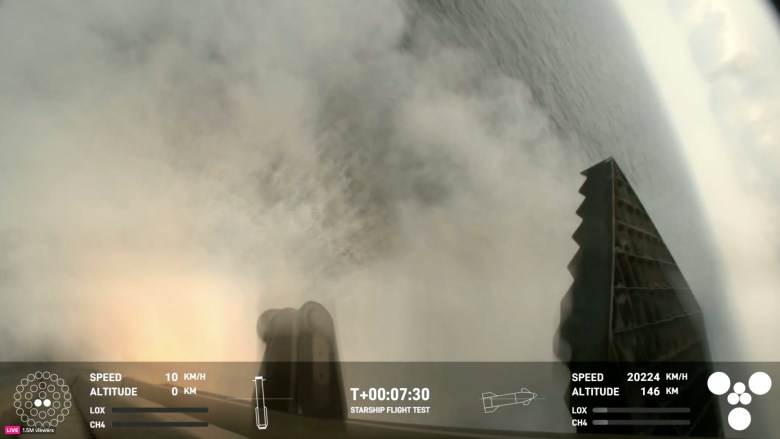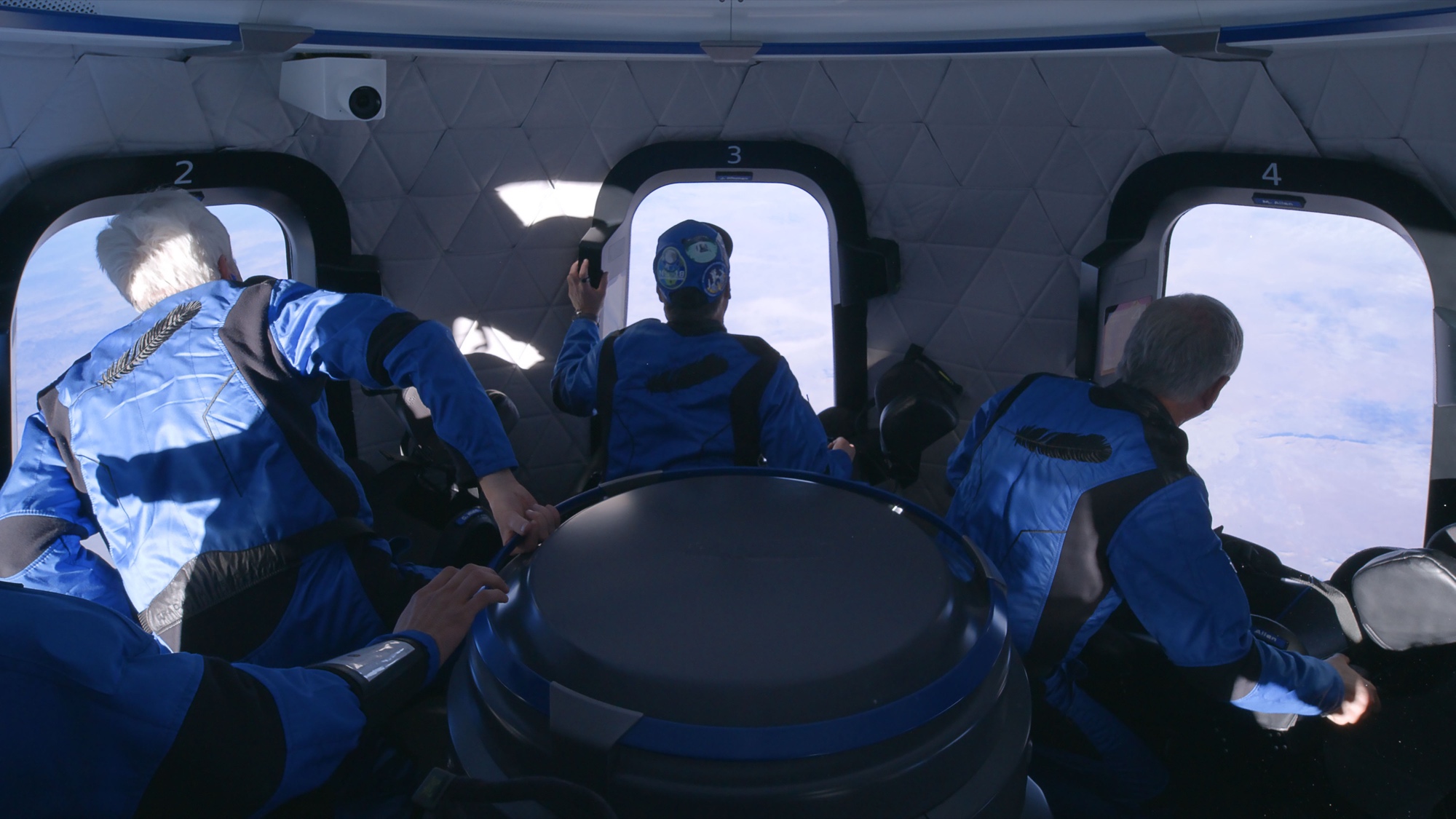Updated 3:20 p.m. Eastern with additional comments.
CAPE CANAVERAL, Fla. — SpaceX conducted the fourth test flight of its Starship launch system June 6, with both the Super Heavy booster and Starship upper stage making it back to the surface intact.
The vehicle lifted off at 8:50 a.m. Eastern from the company’s Starbase test site at Boca Chica, Texas. The ascent appeared to go as planned other than the failure of one of 33 Raptor engines in the Super Heavy booster to ignite.
After “hot staging” stage separation, where the Starship upper stage ignites its engines before separating from Super Heavy, the Super Heavy booster performed a boostback burn without any Raptor engine failures, as was the case on two previous flights. It then jettisoned the hot staging interstage section, a new step for this launch that SpaceX says is a temporary measure to reduce the mass of the booster for its landing.
During the booster’s final phase of descent, it reignited three Raptor engines for a landing burn. This allowed the booster to make a “landing” in the Gulf of Mexico, reducing its velocity to zero at the ocean surface before toppling over. Achieving that landing was a major priority for the mission.
Starship flew its planned suborbital trajectory, not exhibiting the rolling seen on the previous launch in March. Starship provided live video during reentry through SpaceX’s Starlink satellites, offering dramatic views of the plasma field enveloping the spacecraft.
Starship made it through the maximum phase of heating, unlike the March flight, although video showed damage to one flap. The vehicle continued a controlled descent and performed a landing burn before splashing down about 65 minutes after liftoff.
“The payload for this test was the data,” the company said in a post-launch statement summarizing the flight. “Starship delivered.”
“Despite loss of many tiles and a damaged flap, Starship made it all the way to a soft landing in the ocean!” said Elon Musk, chief executive of SpaceX, on social media.
NASA Administrator Bill Nelson also praised the flight as a step towards development of a lunar lander version of Starship that the agency plans to use for its Artemis lunar exploration campaign. “Congratulations SpaceX on Starship’s successful test flight this morning!” he posted. “We are another step closer to returning humanity to the Moon through Artemis—then looking onward to Mars.”
Musk said in an April presentation that if the Super Heavy booster’s landing at a “virtual tower” in the Gulf of Mexico was a success on the fourth flight, the company could attempt to bring the booster back to the launch site on the next flight to attempt to land it back on the pad with the assistance of “Mechazilla” arms on the launch tower.
Musk appeared to be pressing ahead with that plan in a comment on social media shortly after this flight. “I think we should try to catch the booster with the mechazilla arms next flight!”

Updated FAA license
The launch took place two days after the Federal Aviation Administration issues an updated launch license for Starship. The updated license made no major changes in how SpaceX would conduct the launch but was needed for SpaceX to proceed with the mission.
The FAA, though, did approve a series of exceptions proposed by SpaceX that could speed up the time before its next flight. The “test induced damage exceptions” would allow SpaceX to skip an investigation if they contributed to the loss of the vehicle in the flight provided they did not affect public safety.
The FAA approved three such exceptions: failure of the vehicle’s thermal protection system during the Starship reentry, failure of the vehicle’s flaps to provide sufficient control during reentry and failure of the Raptor engines during the landing burn. The FAA said that if any of those failures occur, an investigation will not be required provided it does not result in casualties or third-party property damage, or debris outside of approved hazard areas.

New lawsuit threat
The same day as the FAA issued a new launch license, an environmental group announced its intent to sue SpaceX, alleging its ground systems were causing water contamination.,
SaveRGV, a group focused on the environment of the Rio Grande Valley region of Texas, announced June 4 that it informed SpaceX it would file suit against the company, claiming “ongoing violations of federal law,” specifically the Clean Water Act.
SaveRGV says that the water deluge system that SpaceX installed at Starbase, intended to limit damage to the pad during Starship launches, discharges “industrial wastewater” that includes contaminants like metals that can travel as far as one kilometer from the pad. SpaceX lacks a permit for such discharges from Texas state regulators, the organization says.
An environmental review conducted by the FAA before the second Starship/Super Heavy launch in November concluded that the additional of the water deluge system resulted in no significant environmental changes. The review concluded that the water from the deluge system “is expected to be less than an average summer rainfall event” and “would be unlikely to alter water quality.”
The organization said it will file suit against SpaceX within 60 days, seeking civil penalties and injunctive relief that could prohibit SpaceX from using the deluge system or even performing launches there.



